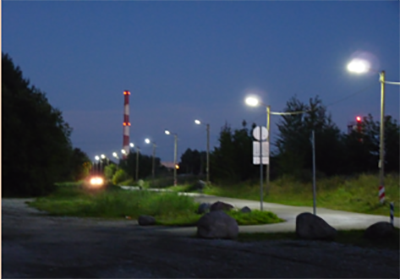What Are The Benefits and Disadvantages of LED Streetlights?
Benefits of LED Streetlights
- The LED lights are more energy efficient thereby consuming less energy to power which means that municipalities save money when compared to relying on older bulbs. This has a positive impact on the environment by reducing carbon footprint and saves on energy costs so helps to achieve the objective of clean energy. LED lights are shown to be 50% more efficient than regular sodium light.
- They last longer than traditional bulbs, having a lifespan of 15 to 20 years rather than two to five, meaning that less maintenance is required. Also saving time and money.
- The increased light quality can improve perception at night thereby reducing the risk of accidents due to poor night time visibility. Brighter streetlights also make people feel safer when walking out at night time.
- The lights can be integrated with smart technology allowing for easier remote control which again can provide greater efficiencies in cost and energy usage.
- It also has an unexpected value for police, who can collect more detailed and accurate descriptions from witnesses in well-lit areas.
Disadvantages of LED Streetlights
- Many of them, especially older ones, shine too intensely and feature too much blue content, causing insomnia and other health risks. Circadian rhythms, which effect a person’s sleep/wake cycle, among other processes, are behind this reaction. Blue content in light can keep people awake, so when they’re exposed to it and their circadian rhythms are disrupted, they run the risk of health problems.
- Although the lights do save money over time there’s a much larger initial capital investment to install led street lighting which can be a challenge for cities and districts to find funding.
- Light pollution could be increased by a factor of up to 2.5 making it more difficult to view the night sky and also have an effect on wildlife as it can skew their perception of day and night therefore upsetting their natural behavior.
Why do LED lights have a negative effect?
American Medical Association, or AMA released an official statement, unanimously approved by the group’s members, with guidelines on how to mitigate the potential for harm to both human health and the environment.
The main problem with them is their color temperature (CT), a numerical rating of the color hue of a light source. Higher values on the color temperature chart indicate more blue content and “cooler” lights while lower values indicate a “warmer” light with more red content. The AMA advises that outdoor night lighting should not have a CT over 3,000 Kelvin temperature; a white LED light, popular in cities like Seattle and New York, can have a CT of 4,000-5,000K. For reference, a typical incandescent bulb is about 2,700K and a candle or small fire is around 1,800K. These LEDs do not just affect circadian rhythms but may also harm the human retina if viewed for a long enough period of time. Driving at night could soon become much more difficult due to this effect.
Another issue is that while CT is a useful metric, it has its limitations, namely, it does not factor in human color perception. Correlated color temperature (CCT) is another method that accounts for how human vision is sensitive to colors. Going by this method, two LEDs with a CT of 3,000K may look vastly different from each other. One light may have more blue content than the other which would cause a shift in their hue. While the AMA’s statement is a start, this example shows that CT or CCT measurements alone are inadequate and additional metrics are needed.
How are different areas using LED lights?
Different areas of the country have had different response to the recent warnings from the AMA:
- Seattle, is keeping its 41,000 harsh LED lights. A spokesman compared the street lights’ glow to that of the moon and said it improves drivers’ vision at night.
- Gloucester, Massachusetts, heard about the health warnings as it was in the process of installing harsh LED lights. It has since switched to a newer type that shines at 3,000K.
- Phoenix, meanwhile, has found a middle ground. In large intersections and parks, it will use harsher lights, but LEDs with a lower color temperature will illuminate residential areas. Mark Hartman, the chief sustainability officer of Phoenix, is weighing the health arguments but not convinced. After all, computers and TVs emit blue light and are commonly used at night, even if they disrupt our circadian rhythms.
How can an organization or city be sure that their LEDs are not damaging? Konica Minolta Sensing Americas has a wide array of light measuring tools that can help. Both the CL-200A and the CL-70F can measure color temperature along with other metrics like duv or spectral power distribution (SPD) that help determine your streetlights are emitting blue content within a safe range.











